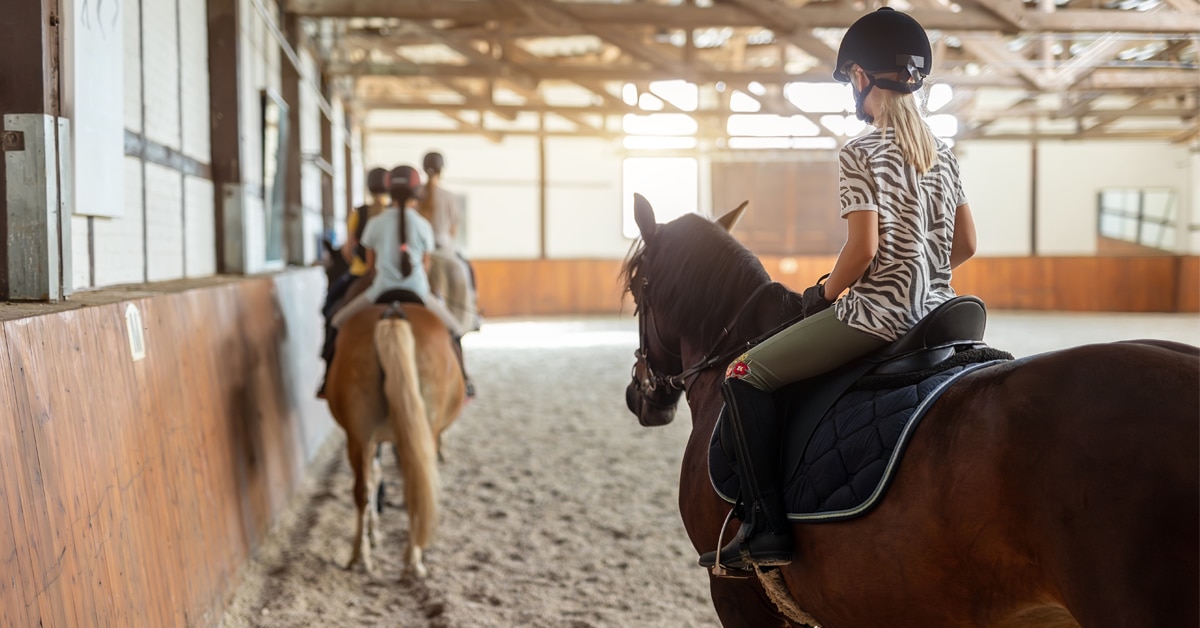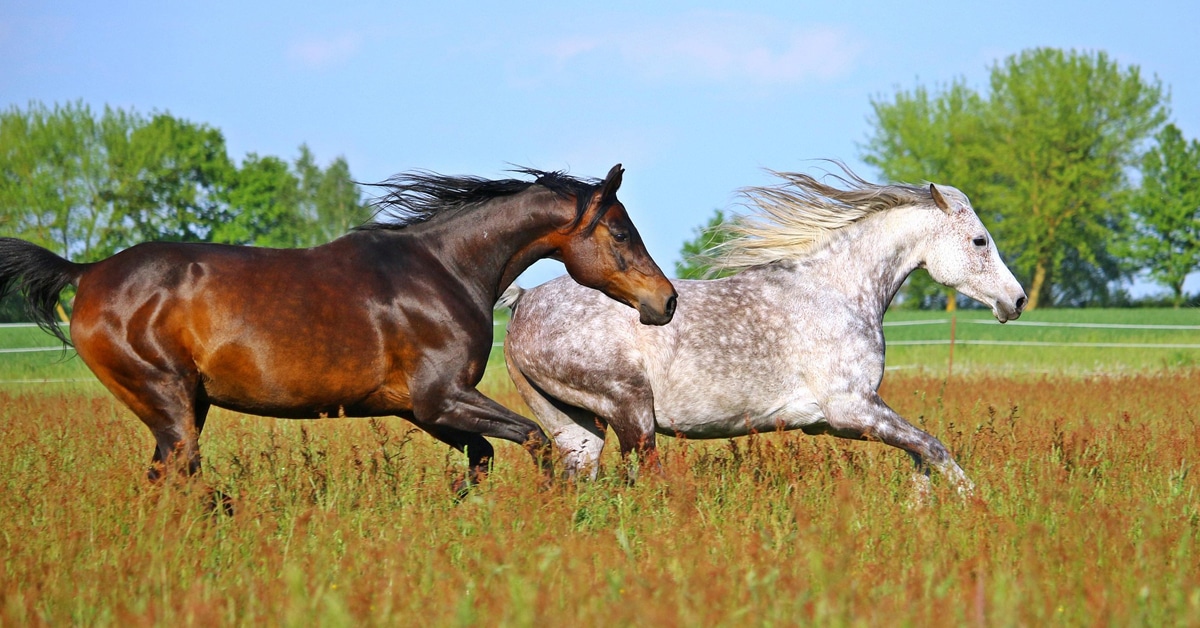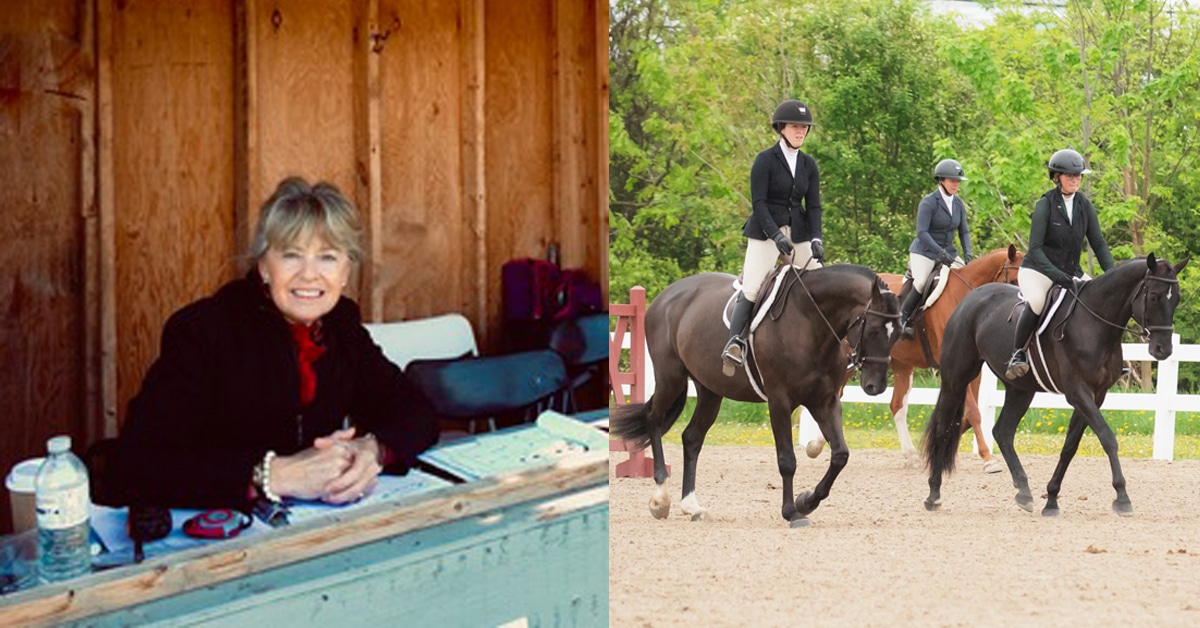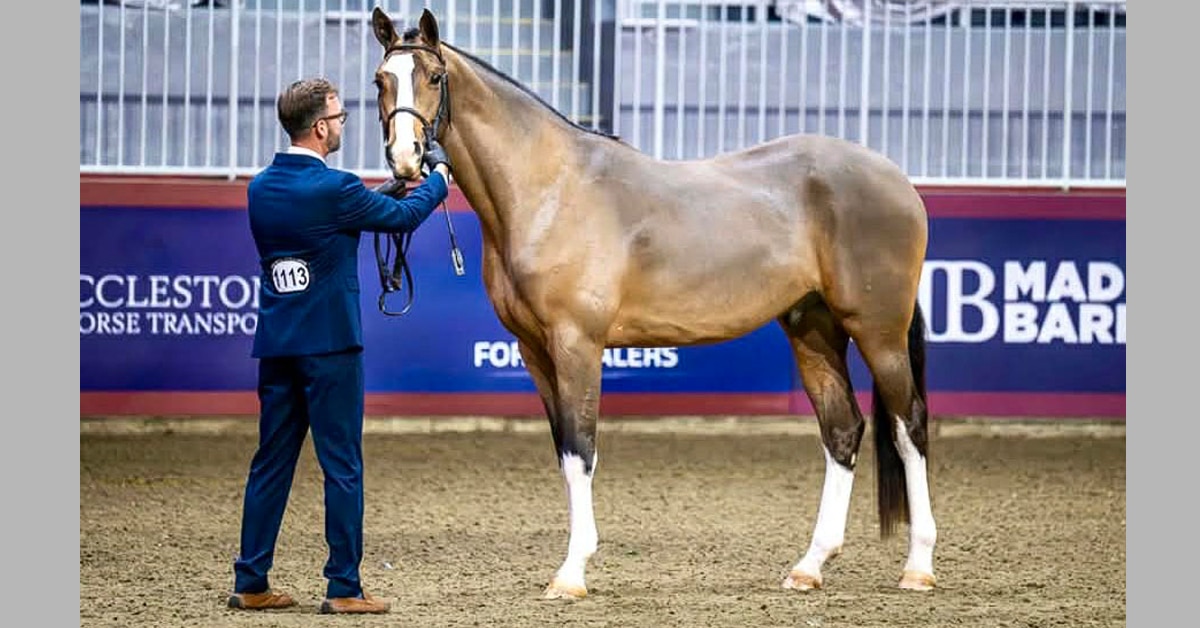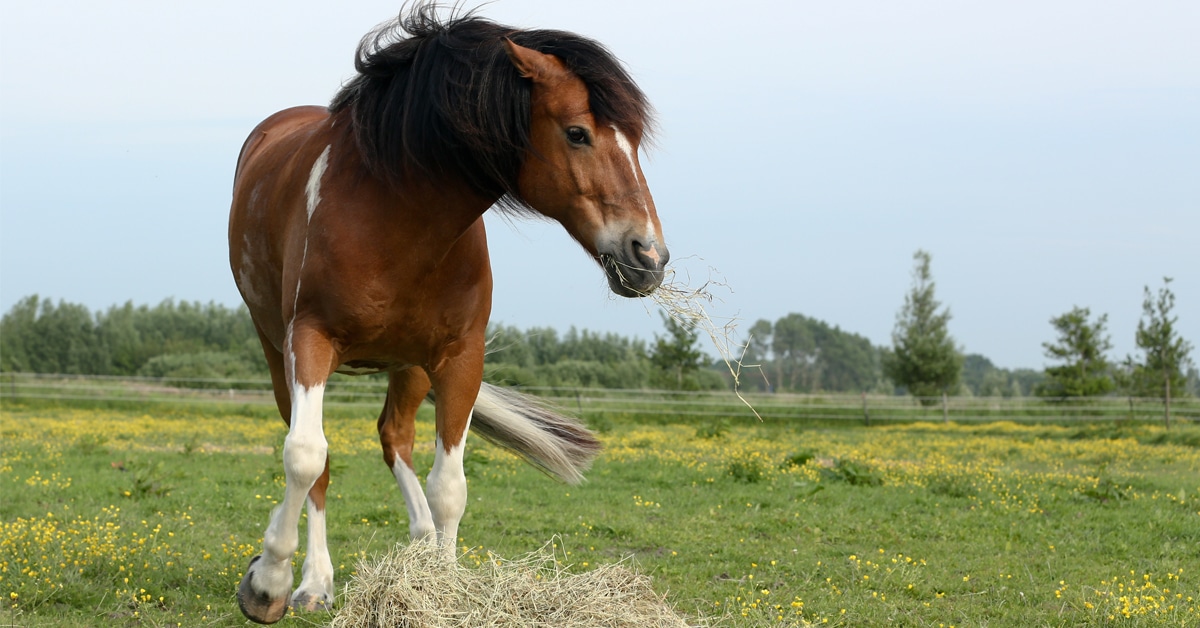Whether we are asking our horses to compete in the International Ring at Spruce Meadows, canter down the centre line at Devon, gallop cross-country at Rolex Kentucky, or just head down the trail for a quiet Sunday stroll, it almost always runs counter to their evolutionary design to flee first and ask questions later – or preferably not at all. Horse industry professionals and amateurs admire equine courage, equine personality, and speak disparagingly of horses who are “gutless.”
But horses were not designed to be brave. They were designed to eat grass on open grasslands with their herd, and to react with a hair-trigger flight response at any real or perceived threat. These attunements served them well on the range, but are counter-productive for the typical demands faced by today’s sport horses.
To date, we have only a rudimentary understanding of equine personality in general, or equine courage in particular, and no objective, standardized industry measures that are used to inform buyers for more suitable horse/rider combinations or to make better decisions in breeding programs. Attempts to measure equine personality have been incorporated into selection criteria for sport horse breed evaluations (Koenen et al., 2004), but these are subjective, not standardized, and ratings are not always comparable (von Borstel, 2013).
Here I will explore how equine scientists have measured equine personality and what we know to date. I argue that if we could select the ideal modern sport horse personality we would choose ‘brave.’ And since horses were not designed to be brave, we need to nurture every horse’s inner lion.
Measuring Equine Personality
Measuring equine personality is not straightforward, as to date horses have shown little interest in, or talent for, filling out personality questionnaires. Nevertheless, a large number of personality tests have been developed over recent years to assess traits such as fearfulness, confidence, boldness, extraversion, reactivity, motivation, gregariousness, and tactile sensitivity (von Borstel, 2013).
Subjective Measures: “The Big Five”
The Five Factor Model (FFM, Costa & McRae, 1992), purported to encapsulate most dimensions of human personality, describes five bipolar personality factors along which people can vary. Commonly dubbed “The Big Five,” the FFM uses self-report questionnaires to assess where individuals lie on each of five factors: Neuroticism (emotional stability), Agreeableness (niceness), Extroversion (outgoingness), Openness (to new experiences), and Conscientiousness (dependability).
Using the FFM to assess animal personality (with caretakers completing questionnaires), researchers find that animals vary along these personality dimensions much as humans do. In a review of a large number of animal personality studies, Gosling and John found that the Big Five factors – Extroversion, Neuroticism, Agreeableness, Conscientiousness, and Openness – could be used effectively in describing animal personality. Pigs, dogs, donkeys, dolphins, chimpanzees, and even guppies and octopi all demonstrated individual variability along these dimensions.
Morris, Gale, and Howe (2002) were the first to modify the FFM for horses, asking owners to rate the degree to which 60 statements corresponded to their horse’s personality (e.g. “He/she enjoys going to new places” or “He/she worries a lot”). They found that Neuroticism (reactivity), Agreeableness (being well mannered), Extraversion (sociability with other horses), Openness (curiosity about new experiences), Conscientiousness (reliability), and a new factor, Activity (energy), could reliably be applied to horses. Later work by Kristiansen and colleagues (2013) extracted eight factors (Neuroticism, Activity, Conscientiousness, Agreeableness, Openness, Social Extraversion, Temperamental, and Disciplined).
Objective Measures: Standardized Behavioural Tests
Horse personality has also been assessed in standardized behavioural, in-hand tests designed to test equine compliance, reactivity, and trainability. Horses are presented with novel objects, asked to step on a rustling plastic tarpaulin, faced by a suddenly opening umbrella, offered a food reward lying in front of the dreaded but now closed umbrella, while times and distances fled are recorded. Ijichi’s research group (2014) assessed whether personality factors captured in a subjective, owner-reported, FFM questionnaire could predict horses’ performance in objective behavioural measures and found that only Extraversion and Neuroticism were consistent across measures. This low reliability is not promising for equine personality research. Perhaps owner reports are too subjective to be reliable, or possibly behavioural assessments are too contrived to capture a horse’s personality across multiple situations.
More promising results about personality measures’ predictive ability is found in Lansade and Vidament’s 2015 study. Twenty-four French show jumping horses completed a standardized behavioural test, and were assessed one year later at a show jumping competition. The most fearful horses (from the original behavioural assessment) were the most difficult to ride in competition (shying, head tossing, pulling, behaving erratically, etc.), but were also the least likely to incur jumping faults. Horse trainers know this phenomenon well, noting that the most “careful” jumpers make great horses for professionals because they don’t want to hit the jumps, but are not always the best choice for amateurs because their carefulness makes them less tolerant of mistakes and more likely to stop jumping altogether when “lied to” too often. The authors suggest that there are not necessarily suitable or unsuitable personalities, but that each horse’s strengths and limitations need to be weighed against the horse’s intended purpose.
The Ideal Equine Personality
In large-scale surveys, across samples of riding school teachers, recreational riders, and professional competitors, personality is consistently rated as the most important criteria – more important than conformation, price, gaits, or jumping ability (e.g. Buckley et al., 2004; Graf et al., 2015). Personality matters; courage matters the most. For example, Axel-Nilsson and colleagues asked respondents to rate the importance of 14 behavioural traits in considering an ideal horse for purchase (see chart). All behavioural traits were considered important by more than half of the nearly 3,000 professional and recreational riders surveyed, but traits capturing aspects of courage (e.g. “Easy to bring to new environments”, “spirited and forward”) were rated as important by the highest number of respondents.
Ideally, most of us would like a horse that happily works independently and bravely goes where (from the horse’s perspective) no one has gone before. In the equine job description, courage is a critical transferable skill. Ultimately, the more masterfully a horse can override his natural flight instinct and focus on his rider, the more suitable he will be across disciplines. Since horses are evolutionarily hard-wired not to do this, it is up to us to help (see sidebar).
Normal Behaviour?
Better suitability between horse and rider, breeding programs that focus on character and temperament, and using learning theory to build bravery will do much to increase safety and help horses cope with the demands they face in a modern equine world. Clearly, there are individual differences in horses’ ability to overcome their natural flight tendencies. The horse who catches a white fluttering object out of the corner of his eye, stops, spins, and exits the ring at full speed is responding naturally and precisely as he was evolutionarily intended to do. The horse who, with intense focus, passages accurately with the water sprinkler truck in the adjacent dressage ring is not.
A large number of personality tests have been developed over recent years to assess traits such as fearfulness, confidence, boldness, extraversion, reactivity, motivation, gregariousness, and tactile sensitivity.
Nurturing Courage: “You go first…” “No, you go first…”
To expose your horse to new and frightening events (or to old and frightening events) enlist an experienced horse to pave the way. Many phobias can be avoided if a horse’s first exposure involves following a veteran. Horses are hard-wired to take instruction from a leader and will naturally follow whomever seems to have a handle on a suspicious situation. When another horse is not available, you can stand in as a second best. When your horse is afraid, get off and go first, and do so before things get dramatic, rather than after.
Reinforcing and Shaping Courage
Positive reinforcement means that behaviours that are followed by a reward are more likely to reoccur in the future. Horses are good candidates for positive reinforcement because, designed for almost continual eating, food rewards never get old! The more opportunities we have to build up a reinforcement history by repeatedly rewarding the desired behaviour, the more solid the behaviour will become.
Most of the behaviours we would like to see, however, do not occur spontaneously (such as suppressing an instinctive alarm reaction to terrifying stimuli) and so do not provide a reward opportunity. In these cases, animal trainers (and clinical psychologists!) use “shaping,” where we reward closer and closer approximations of the desired behaviour.
If I want to teach my needle-shy horse to tolerate an injection, I find the point where he becomes tense, back up several steps, and begin sufficiently far away so as to elicit no reaction. I go through the motions of loading a needleless syringe, bringing it closer, placing it on his body, his neck, and so on, and at each step, stop and reward him with a treat for his non-reaction. If he tenses, I wait until he settles before rewarding. If he doesn’t settle, I move back in the sequence until he is calm, and build again.
Eventually (possibly several sessions) I am able to mimic all the steps of giving my calm, non-reactive horse an injection. The horse will learn more quickly and the new behaviour will be more solid when we can create more opportunities to reward the desired calm behaviour. There is no upside to hurrying and creating a tense horse, and no downside to rewarding frequently.
Increasing His Worldliness
There is a tendency to anticipate situations where horses are likely to be reactive and avoid them, particularly when horses’ responses have been sufficiently volatile as to be frightening. However, avoidance actually strengthens this reactive behaviour through negative reinforcement, which occurs when a behaviour is strengthened because an unpleasant stimulus has been removed.
When a horse becomes reactive about the sprinklers going off at the horse show, and we take him far away from the sprinklers, we have inadvertently rewarded him for his reactive behaviour, making it more likely that we will see this behaviour in the future. Instead, we need to slowly build the horse’s confidence, through shaping and positive reinforcement, that sprinklers are not lethal, and will indeed be a part of his world.
And, if we teach our horse to tolerate sprinklers, when we next teach him to deal with clippers, shaping will likely move along faster. It seems that horses are able to generalize the process of learning. The more frightening experiences they master, the more equipped they will be to deal with the next. As you add new experiences to his repertoire, you build a reinforcement history that new things mean that good stuff follows. Broaden your horse’s worldliness, rather than narrow it.
The Latest

